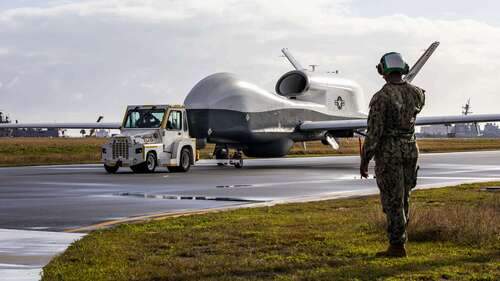
The MQ-4C Triton isn’t an “original” design, per se. Instead, it’s a variant of the RQ-4 Global Hawk, which shares its overall design and objective as the U.S. military’s premier high-altitude, long-endurance unmanned reconnaissance platform. However, the Triton is retrofitted to act as what the Navy calls an: “Intelligence, Surveillance, Reconnaissance Maritime Patrol asset.” The Triton is perfect for the role, with its ability to fly for over 30 hours at altitudes up to 55,000 feet.
Central to the Triton’s capabilities is its primary sensor, the AN/ZPY-3 Multi-Function Active Sensor (MFAS) radar. This advanced active electronically-scanned array (AESA) radar system enables the Triton to survey vast expanses of land and shorelines, covering millions of square miles, regardless of weather conditions. This exceptional surveillance capability has garnered significant interest from U.S. allies, with Australia notably procuring a fleet of seven Tritons to monitor its territorial waters.
While the Triton shares its overall design with the Global Hawk, several key modifications set it apart. The Triton features a reinforced airframe, designed to withstand the challenges of operating at lower altitudes, such as hail, bird strikes, and lightning. This enhanced durability allows the Triton to descend to altitudes as low as 10,000 feet, enabling closer inspection of targets using its multi-spectral electro-optical/infrared sensor. In contrast, the Global Hawk is constrained to operating at altitudes of 50,000 feet or higher.

